Back in Time at the Fur Trade Festival: Part Four
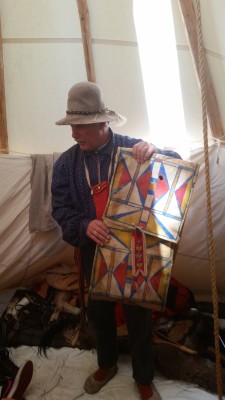
Welcome back!
Today we are shifting gears and talking about what kinds of items were traded among the folks at the Hudson Bay Company in the Kettle Falls Area.
For those of you who are just joining in, here is the scoop on the Fur Trade Festival:
Every year the Lake Roosevelt National Recreation Area’s education specialist, Janice Elvidge, heads up the Fur Trade Festival at the Kettle Falls Historical Center and Mission Point that perches above Lake Roosevelt at Kettle Falls, WA which is a section of the Columbia River from Grand Coulee Dam to the Canadian border.
This year was the fourth annual event for grades 3-6 held June 2, 2014. Sessions this year included: Furs of the Fur Trade, David Thompson and David Douglas at the Kettle Falls, Fur Trade Tools, Traps, Fire and Firearms, Fire Starting and Rope Making, Indian Sign Talk, and Tools and Women of the Fur Trade.
Area schools and their classrooms participate. I think I was the only program coordinator/teacher who brought an after school program––Rez Stop (Raising our Educational Zone and Standing Tall On Pride). So we actually had grades 3-7 represented in one group and the students had an exciting and education time learning about the old days and how people survived and traded.
Now, onto the historical items that were actually traded in the 1800s.

Native Americans used natural materials for everyday use 200 years ago. They used deer bone to fashion spoons and needles; wood to carve cooking rock tongs, bowls and cups; and cedar bark strips, bear grass, and pine needles to weave intricate baskets. These handmade baskets were and still are a revered work of art. Dyed grasses were used to decorate the bags and some were woven so tightly they were waterproof.
When the French came down from Canada, they traded metal pans and cups which became more practical for the Natives. Many of these pots, pans, and cups were forged of cast iron and made in Pennsylvania. This iron was light, not like todays heavy Dutch oven iron. Voyeurs liked to pack copper, which is also light and easy to carry.
The tools they used were also metal. When heated in a forge, the metal would bend as easily as boiled spaghetti. At the Fur Trade Festival, tools were passed around that fourth graders in the area had fashioned; they did a remarkable job as you can see in the photo at the bottom of this page. All these items were produced right at the trading camps.
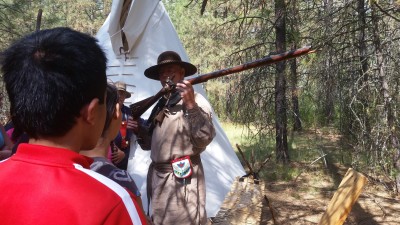
Rifles and other tools were a work of art as craftsmanship was esteemed in those days and etched with ornamentation like someone’s signature.
Countless men worked for these trading companies. Believe it or not, they made $2.00 a month, which was good money back then, and the companies supplied all their needs: clothing, bedding, trade muskets, and food.
French trappers in this area married Native women. In fact, this happened with my husband’s family as Peone is French––my husband is mostly Native, but a speck of French blood runs through his veins. These Native women were valued within the trade market because they were so skilled at crafting and bartering items such as brain-tanned hides, shirts, scrapers or fleshers made from bone or stone for scraping hides, rawhide which was the first suitcases called par fleshes, and beaded jewelry.
Native People used deer or elk for hides and rawhide; the only difference of the two is in the processing. Brain-tanned hide is of course scraped and soaked, but then rubbed with a mixture of deer brains and water. It is then stretched on a wood frame, dried, and softened. Rawhide is scraped then simply soaked and dried.
Brain-tanned hides were, and still are, used to make robes, shirts, pants, bags and pouches, baby boards, and moccasins while rawhide was used for drum making and of course
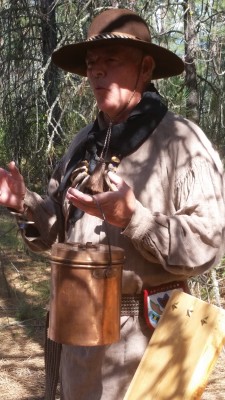
par fleshes. Rawhide is stiff but tough. For drum making, soaked hide was stretched onto a round wooden frame and then dried.
Other items of trade were: tomahawks, axes, knives finely crafted out of deer antler and metal or rock, cloth for shirts and dresses, light or heavy wool, trade beads which were the size of pony beads (seed beads came later), corn husk bags, firearms, beaded bone chokers and breastplates, jewelry, peace or social pipes, and tobacco. I learned that the modern bone beads are used from the water buffalo; I had no idea!
Beadwork is and was one of the most intriguing trade pieces. Tribes were recognized by their patterns or designs and colors used on their clothing and bags. For example, the Plataea tribes of eastern Washington used floral designs in all their beading. Other tribes might use a geometric pattern.
I hope you enjoyed learning about some of the traded items we learned about at the festival.
Next week we will see what kinds of traps and snares were used back then with the materials at hand.
Thank you for stopping by and see you next time!
The Fur Trade Festival is sponsored by:
National Park Service, Lake Roosevelt National Recreation Area, Kettle Falls School District, Friends of Spokane House, Kettle Falls Historical Society.
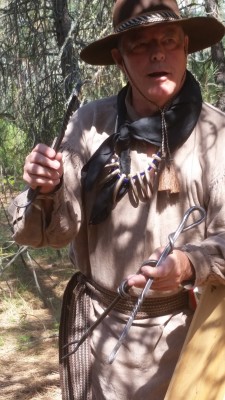
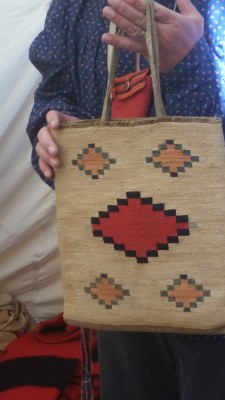
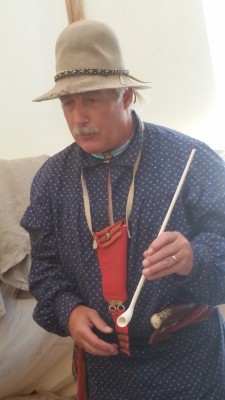

This is really interesting Carmen. I love displays that show the hide and identify the animal. What a great experience the Fur Trade Festival has been for those kids!
Thank you, Mary. This event was so hands on for the kids also. They got to touch and explore so many things.